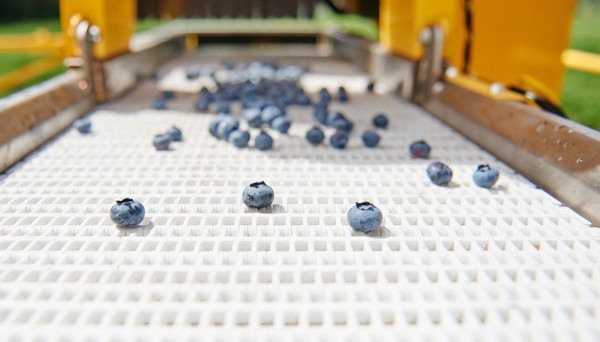Variety development in blueberries continues on in the industry in leaps and bounds. But there’s tremendous room for improvement at all chill levels.
 So says Dr. Michael Dossett, research scientist with BC Berry Cultivar Development Inc. Dr. Dossett spoke recently at the U.S. Highbush Blueberry Council’s virtual expo on what’s new in blueberry genetics. “All of the varieties currently being widely planted have some shortcoming or another. Breeding is a game of moving goalposts,” he says. “You’re putting something out there that represents improvement and hopefully growers will be able to make work. But there’s always room for improvement and it’s going to remain that way.”
So says Dr. Michael Dossett, research scientist with BC Berry Cultivar Development Inc. Dr. Dossett spoke recently at the U.S. Highbush Blueberry Council’s virtual expo on what’s new in blueberry genetics. “All of the varieties currently being widely planted have some shortcoming or another. Breeding is a game of moving goalposts,” he says. “You’re putting something out there that represents improvement and hopefully growers will be able to make work. But there’s always room for improvement and it’s going to remain that way.”
Here are some of the trends Dr. Dossett sees amongst berry breeding development in the industry today.
FOCUSING ON QUALITY: The most important attribute being focused on around qualities is firmness and size says Dr. Dossett. “It’s nice to see flavor emphasized more and more too,” he says. “Down the road, as there are more things in the marketplace for people to choose from, that acceptability is going to shift and we’re going to be eating better and better flavored varieties to keep the markets for our fruit.”
GROWER REVENUE: Development is also of course largely factoring grower revenue into breeding programs as well. “Whether it’s yield or disease or labor savings through machine harvestability or maybe it’s a growth habit or figure that makes it less expensive to prune, all of these things that breeders are working on,” says Dr. Dossett.
IT’S COMPETITIVE: “The breeding landscape is extremely competitive right now and it will only increase. Growers are going to have an array of choices,” says Dr. Dossett. “As the market for fruit becomes more crowded, superior genetics are going to be key for growers and packers looking to differentiate their fruit and extract maximum value for their product so they can remain viable as a farm.” He adds that varieties that are distinct and outstanding will give growers the opportunity to develop markets but only if their production practices can deliver on the genetic potential they are buying into.
LICENSING WILL DEVELOP TOO: Licensing and marketing agreements will reflect this down the road. “Licensing options are going to be more complex and probably more expensive. Breeding is not cheap,” says Dr. Dossett, noting that all serious breeding programs put out thousands if not 10,000 + plants annually. The time and resources involved in collecting information, screening factors out, identifying markers for traits that need to be focused on is all involved in this progress. “That comes with the cost,” he adds.
 Photo: U.S. Highbush Blueberry Council
Photo: U.S. Highbush Blueberry Council
REMEMBER….BRUISING: With the industry focusing on firmness when it comes to breeding berries in order to develop a berry that’s suited for machine harvestability, bruising needs to be factored in. “You have berries that are firm, even crispy but they’re also quite susceptible to bruising on the machine,” says Dr. Dossett. He adds that optimal size also needs to be considered. “There are always giant berries in the marketplace—a lot of markets like to see those. But we end up with a physics problem in that force of the berry hitting the plate or packing line—that’s compounded by the size of that berry,” he says.
CONCENTRATION ON RIPENING: “When does a blue fruit ripen?” asks Dr. Dossett. With berries that are firmer and firmer, one of the things that comes out of that is the selection of material that turns berries blue before they’re fully ripe, he says. Yet how are ripe berries evaluated? “Growers want to efficient and pick as few times as possible. If you let fruit hang, things may be blue for two weeks next to fruit that’s been blue for two days and the quality of those berries will differ wildly.” The focus needs to also be on berries that turn blue and ripen uniformly.
In the end, Dr. Dossett has words for growers considering replacing older varieties with newer options. “Everyone’s farm is different so dedicate space on your farm to plant and test new material,” he says. “Call the nurseries every year or every few years for trial numbers from the plants and see what will and won’t work on your farm. Growers should evaluate new material as it comes out so when they’re ready to turn over acreage, they have a game plan.”
For more information:
Dr. Michael Dossett
BC Berry Cultivar Development Inc.
mdossett@mail.ubc.ca
